Don't wanna be here? Send us removal request.
Text
#aluminum covers#aluminum cover#aluminum dishes with covers#aluminum dishes#aluminium cover price#dish covers#aluminum dish#covers for dishes
0 notes
Text
Buy the Best Gear Motors for Reliable Performance – Top Gear Motor for Sale in the USA
When it comes to optimizing motion control in industrial or commercial applications, gear motors are an essential component. Whether you're automating machinery, running conveyors, or improving equipment performance, choosing the best gear motor can significantly impact efficiency, durability, and energy use.
In this guide, we'll explore the benefits of gear motors, how to choose the right one, and why products like the SEW helical gear motor are leading the market. Plus, find out where to buy high-quality gear motors for sale in the USA.
What Are Gear Motors?
A gear motor is a combination of a motor and a gearbox, designed to deliver high torque at low speeds. It simplifies mechanical design and saves space by integrating the motor and gearing system. Gear motors play a vital role across various industries, including:
Manufacturing and automation
Material handling
HVAC systems
Food and beverage processing
Robotics and packaging
Types of Gear Motors
Gear motors come in various configurations, each suited for different applications:
Helical Gear Motors: Renowned for their high efficiency, seamless performance, and low noise operation. The SEW helical gear motor is a prime example of this technology.
Worm Gear Motors: Ideal for compact spaces and applications requiring self-locking mechanisms.
Planetary Gear Motors: Used when high torque in a small footprint is needed.
Why Choose SEW Helical Gear Motor?
SEW helical gear motors are known for their precision, energy efficiency, and robust design. These motors are ideal for applications where reliability and long-term operation are critical. Their helical gearing provides better torque transmission and quiet operation, making them suitable for demanding environments.
How to Choose the Best Gear Motor
Here are a few factors to consider when buying a gear motor:
Torque and Speed Requirements – Define your application's torque needs and desired output speed.
Load Type – Understand whether the motor will run continuously, intermittently, or with variable loads.
Mounting Style – Consider space and how the gear motor will fit into your system.
Efficiency – Choose motors with high energy efficiency to reduce operating costs.
Brand Reliability – Go for trusted brands like SEW or others known for industrial-grade performance.
If you're looking for the best gear motor, make sure to prioritize quality, load capacity, and motor lifespan over just price.
Gear Motor for Sale – USA’s Best Deals
We offer a wide selection of gear motors for sale in various sizes, torque ranges, and mounting styles to meet your unique needs. Our inventory includes:
AC and DC gear motors
Inline and right-angle gear motors
Heavy-duty industrial gear motors
Energy-efficient SEW helical gear motors
All our products are backed by warranty and come with expert support to help you select the right solution.
❓ Frequently Asked Questions (FAQs)
Q1. What is the main benefit of using gear motors? Gear motors reduce speed and increase torque, which improves control and mechanical advantage in machinery.
Q2. Do you offer bulk pricing for gear motors for sale? Absolutely! Contact us for custom quotes and bulk order discounts.
📞 Call to Action
Looking for high-performance gear motors for sale in the USA? Whether you need a SEW helical gear motor or want help selecting the best gear motor for your application, we’re here to help.
👉 Contact us today to speak with our gear motor experts or request a quote!
Conclusion
Investing in the right gear motor can elevate your operations by improving power efficiency, reducing downtime, and extending machinery life. With high-quality options like the SEW helical gear motor and a wide range of gear motors for sale, you’re sure to find the perfect solution for your industrial needs.
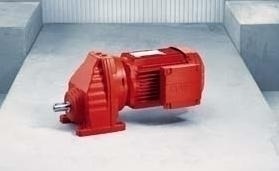
#helical gear motors#gear motors#gear motor for sale#sew helical gear motor#best gear motor#eurodrive gear motors#gear sew eurodrive#helical gearbox#helical geared
0 notes
Text
#gravity roller conveyors#gravity roller conveyors for sale#buy gravity roller conveyors#gravity conveyor rollers#gravity conveyors#gravity conveyor system#best gravity conveyor#gravity roller conveyors in Illinois
0 notes
Text
Reliable Metric Threaded Rods Available Locally in North Carolina
Why Metric Threaded Rods Matter for North Carolina Projects:
Metric threaded rods play a vital role in construction, manufacturing, and DIY projects across the United States, and their popularity continues to grow in states like North Carolina. Whether you are working on a residential upgrade, a commercial building, or a heavy-duty industrial job, having the right hardware is critical and metric threaded rods are often the go-to choice for many local contractors and fabricators.
These rods, known for their precision and strength, offer a clean and consistent thread pitch that is especially useful in applications requiring international compatibility or exact engineering. While imperial measurements still dominate much of the U.S. market, the demand for metric solutions has risen due to the increase in imported machinery, tools, and components that follow global standards.
If you are based in the Tar Heel State, it is essential to know that sourcing metric threaded rods in North Carolina is easier than ever. Local suppliers, specialty hardware stores, and online vendors based in-state offer a wide variety of sizes and finishes. That means quicker delivery times, reduced shipping costs, and local customer support—key advantages when deadlines are tight or specifications are strict.
Many professionals and DIYers alike appreciate the uniformity and compatibility that metric threaded rods bring to the table. They fit seamlessly with modern equipment, making installations smoother and repairs more efficient. It is no surprise that industries such as aerospace, automotive, and energy are turning to metric fasteners for both new builds and retrofits.
Another strong point for choosing metric threaded rods is their versatility. They can be cut to any length and used in a broad range of fastening applications, from suspending equipment to securing structures or even anchoring machinery. They are available in stainless steel, zinc-plated steel, and other materials to match the demands of your specific environment—be it indoors, outdoors, or exposed to harsh conditions.
For businesses and contractors in North Carolina, having local access to these components is more than just a convenience—it is a competitive edge. Whether you are based in Charlotte, Raleigh, or a smaller community, you can find trusted vendors who understand local regulations and project needs. Local sourcing also supports the community economy and ensures that you are getting products tailored for the region’s climate and industrial trends.
When choosing a supplier for metric threaded rods in North Carolina, it is smart to look for those who offer clear specifications, material certifications, and reliable customer service. Many North Carolina-based distributors cater specifically to the needs of local engineers and builders, which helps bridge the gap between global standards and local expectations. In the end, employing metric threaded rods guarantees uniformity, dependability, and flexibility. For those in North Carolina looking to modernize their systems or maintain compatibility with international equipment, these rods are a smart investment. With more local options than ever before, there is no need to look far to find exactly what you need.
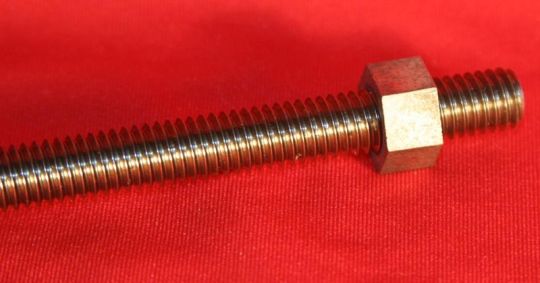
#metricthreadedrods#metricthreaded rodsinNorthCarolina#MadeInNorthCarolina#MetricToolsUSA#ThreadedRods#ThreadedRodSolutions#NorthCarolinaHardware#USA
0 notes
Text
#knockout punches#Round Knockout Punches#Buy Quality Knockout Punches#knockout punch tool#knockout punches for sale#buy knockout punch tool online#best knockout punches in Kentucky
0 notes
Text
#digital timer clock#online digital timers#digital timer clock online#digital clock timer#online digital timer clock in Illinois#best online timer#large digital clock online#online digital timer clock#buy stopwatches online#buy digital clock online
0 notes
Text
#magnetic chuck repair#permanent magnetic chucks#electric magnetic chucks#chuck repair services#magnetic permanent chuck#magnetic chuck repair services#magnetic chuck repairs#magnetic chuck services#Best Magnetic Chuck Repair Services in Michigan#Best Magnetic Chuck Repair Services#Best Magnetic Chuck Repair
0 notes
Text
#paper shredder machine for sale#best paper shredders#best paper shredders for sale#paper shredder machine#paper shredder
1 note
·
View note
Text
Reliable Monitoring Well Cover Solutions in Delaware for Industrial Sites
Finding the right monitoring well cover is not just a matter of preference—it is about protecting your site, your team, and the environment. Whether you are running a small manufacturing facility or a large industrial operation, having the right components in place makes all the difference. Across the USA, more businesses are recognizing the importance of choosing well-made, durable covers that meet both safety and regulatory standards.
In many states, especially where groundwater monitoring is a requirement, well covers serve as a first line of defense. They help protect wells from physical damage, keep contaminants out, and ensure that access is only granted to authorized personnel. Choosing a poor-quality cover can result in compromised data, safety risks, and unnecessary maintenance costs.
For those managing industrial sites in the Mid-Atlantic, finding the right monitoring well cover in Delaware becomes even more essential. With changing regulations and evolving environmental standards, local businesses need solutions that are compliant, long-lasting, and fit for local climate conditions. That is why many Delaware-based companies now prioritize products that not only meet EPA guidelines but also stand up to the region’s humid conditions, winter weather, and industrial demands.
When you are looking for covers that check all the boxes, it is worth exploring features like weather resistance, load-bearing capabilities, and locking mechanisms. These features are not just extras—they are essentials for modern industrial environments. Many facilities are moving toward covers with locking systems, especially in public or high-traffic areas, where protecting well integrity is crucial.
In Delaware, as in other parts of the USA, the need for materials that can withstand corrosion is increasing. Business owners are looking for covers that do not just meet today’s requirements but are built to last for years. It is not unusual for companies to replace worn-out or outdated covers with ones made from cast iron, stainless steel, or polymer composites—materials known for strength and longevity.
Industrial businesses also benefit from local partnerships. Working with suppliers and manufacturers who understand Delaware's specific environmental and regulatory needs can help streamline installation and reduce delays. Not only does this support local industry, but it also ensures faster service and compliance with state-specific codes. If you are unsure where to start, contacting local providers who specialize in monitoring well cover in Delaware can be the first step toward improving your site’s safety and efficiency.
Many decision-makers still underestimate the value of choosing the right cover. But with increasing focus on environmental safety, sustainability, and operational reliability, even the smallest parts—like a monitoring well cover—play a big role. It is not just about sealing an opening.
If you operate an industrial facility anywhere in the [USA], now is a great time to assess the condition of your current well infrastructure. Replacing or upgrading your cover may be a small investment, but it is one that can pay off in avoided repairs, regulatory peace of mind, and improved operational flow. Looking to make a smart upgrade? Make sure you choose a monitoring well cover that fits your location, your needs, and your compliance requirements.

#monitoring well cover#monitoring well cover in Delaware#well cover manhole#monitoring well manhole#Locking Monitoring Well Vault covers#Cast Iron Monitoring Well Cover#USA#Delaware#milton
0 notes
Text
Boost Material Handling Efficiency with Live Roller Conveyors in Illinois
When it comes to optimizing warehouse and distribution center operations in Illinois and across the USA, live roller conveyors stand out as a smart investment. Whether you're running a manufacturing facility in Chicago or a distribution hub in Springfield, these powered conveyors provide the speed, efficiency, and flexibility that modern material handling demands.
What Are Live Roller Conveyors?
Live roller conveyors are powered systems that move products using motorized rollers. Unlike gravity conveyors, they can handle heavier loads and allow for consistent movement regardless of product weight or shape. This makes them ideal for packaging lines, shipping docks, assembly areas, and order fulfillment centers.
In industries where timing and precision matter like e-commerce, logistics, and automotive live roller conveyors are not just a luxury, they're a necessity.
Why Illinois Businesses Are Switching to Live Roller Conveyors
As industrial demand grows in Illinois, especially in cities like Joliet, Rockford, and Naperville, so does the need for scalable automation solutions. Here’s why companies in the region are investing in live roller conveyors:
🔹 Increased Productivity: Faster product transport reduces worker fatigue and turnaround time.
🔹 Better Load Control: Perfect for handling a wide range of package sizes and weights.
🔹 Flexible Design: Can be integrated with sensors, diverters, and automated sorting systems.
🔹 Reduced Manual Labor: Automation minimizes human error and lowers labor costs.
Applications Across the United States
Not only in Illinois, but warehouses, airports, and factories throughout the USA rely on live roller conveyors for smooth and reliable operations. From Los Angeles to New York, businesses use these systems to:
Automate their shipping and receiving processes
Sort and route packages with precision
Streamline assembly lines
In short, if you're looking to enhance operational flow and safety while reducing downtime, live roller conveyors can make all the difference.
How to Choose the Right Live Roller Conveyor
Before making a purchase, consider the following:
Load Requirements – Understand the weight and dimensions of your products.
Line Speed – Choose a system with the right motor capacity and roller speed.
Space Constraints – Look for modular options that fit your floor layout.
Integration Capabilities – Ensure compatibility with your existing automation.
Tip: Partner with a local Illinois-based conveyor expert to get a custom recommendation based on your industry needs.
Q&A: Everything You Need to Know
Q1: Can live roller conveyors handle fragile products? A: Yes, with adjustable speeds and smooth start/stop functions, they are safe for delicate items.
Q2: Are live roller conveyors suitable for outdoor use? A: While primarily for indoor use, weatherproof models can be customized for sheltered outdoor areas.
Q3: How much maintenance do these systems require? A: Minimal. Regular roller and motor inspections ensure long-term durability and reliability.
Why Choose a Local Provider in Illinois?
Working with a local supplier in Illinois ensures quick installation, ongoing service support, and better understanding of your regional logistics. Whether your business is located in Peoria or Aurora, choosing a nearby expert saves you time and resources.
✅ Call to Action: Upgrade Your Material Handling Today
If you're ready to improve productivity, safety, and workflow, now’s the time to invest in live roller conveyors.
👉 Contact your local Illinois conveyor system specialist today for a free consultation or request a custom quote tailored to your warehouse needs.
📞 Contact us today or browse our website to see how our conveyors can optimize your operations.
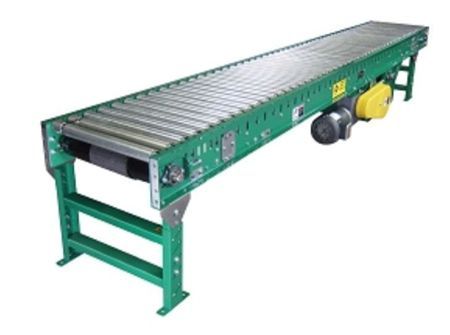
0 notes
Text
Why Composted Pine Bark Is the Go-to Mulch for North Carolina Landscapes
If you are a North Carolina gardener or landscaper, you have probably heard the buzz around composted pine bark. This natural, organic material is gaining popularity across the state—and for good reason. From the coastlines of Wilmington to the rolling hills of Asheville, composted pine bark is helping homeowners and landscape professionals create beautiful, sustainable outdoor spaces. In this blog, we will explore why composted pine bark is a top choice for North Carolina soil and climate conditions and how to make the most of it in your garden.
What Is Composted Pine Bark?
Composted pine bark is made from the shredded bark of pine trees that has been broken down over time. It is not raw bark mulch—it has gone through a composting process that turns it into a rich, dark, and more soil-friendly material. Unlike fresh mulch, composted pine bark will not rob your plants of nitrogen as it breaks down, making it ideal for garden beds and landscaping projects.
Why North Carolina Landscapers Love It
Because of North Carolina's varied geography, which includes clay-heavy areas in the Piedmont and sandy soils in the Outer Banks, choosing the right mulch is essential. Composted pine bark is uniquely suited to thrive in these environments because it:
Improves Drainage: Especially beneficial for North Carolina’s clay soils, composted pine bark breaks up dense earth, promoting better water flow and root growth.
Reduces Soil Compaction: North Carolina’s heavy rainfall can lead to compacted soil.
Regulates Temperature: With the state’s hot summers and fluctuating seasons, composted pine bark acts as insulation, keeping roots cool in summer and warm in winter.
Resists Weed Growth: A thick layer of composted pine bark blocks out sunlight, making it harder for weeds to take hold—saving you time and energy in your yard.
A Local Win for Sustainability
North Carolina’s robust pine forestry industry means composted pine bark is both locally sourced and environmentally friendly. Buying from local mulch suppliers in Raleigh, Charlotte, Durham, or Greensboro not only supports the local economy but also reduces the carbon footprint tied to long-distance shipping. Plus, you are recycling a byproduct of logging—helping make the most of every tree harvested.
Where to Purchase North Carolina Composted Pine Bark
Looking for composted pine bark near you? Check out these local North Carolina mulch suppliers:
Raleigh Mulch and Soil – Offers high-quality composted pine bark and delivery throughout the Triangle.
Charlotte Mulch Yard – A go-to for landscaping pros and DIYers in the Queen City.
Asheville Garden Supply – Great for Western NC gardeners needing composted mulch for hilly terrain.
Do not forget to search terms like "composted pine bark near me", "bulk pine bark mulch Raleigh NC", or "Charlotte NC pine bark mulch delivery" to find the best deals and delivery options.
Conclusion
Whether you are planting flower beds in Wilmington or landscaping your Charlotte backyard, composted pine bark is a smart, sustainable choice. It works with the unique challenges of North Carolina’s soils and seasons, and it is easy to find right here at home. Looking to enhance your garden with composted pine bark in North Carolina? Give it a try—you will see the difference.

#composted pine bark#composted pine bark fines#composted pine bark mulch#pine bark mulch#mulch pine bark#composted pine bark in North Carolina#usa#North Carolina#composting#composted pine bark near me
0 notes
Text
Magnetic Chuck for Sale: Boost Precision & Productivity in Your Workshop
Whether you're a machinist, metalworker, or manufacturer, choosing the right magnetic chuck can make all the difference. These powerful tools are essential for holding ferromagnetic materials during milling, grinding, and turning processes offering speed, safety, and unbeatable accuracy.
If you're looking for a magnetic chuck for sale, this guide will help you understand its benefits, types, and why it's a must-have for your workshop.
Why Choose a Magnetic Chuck?
A magnetic chuck is a fixture that uses magnetic force to hold metal workpieces in place. Unlike traditional mechanical vises, magnetic chucks provide a uniform holding force without distortion.
Benefits of Using Magnetic Chucks:
Strong holding power to grip even small parts with precision
Time-saving loading and unloading of materials
Improved accuracy without clamping distortion
Versatile use for grinding, EDM, and CNC machining
Available in compact sizes like the small magnetic chuck for light-duty or tight-space operations
Magnetic Chuck for Sale – What to Look For?
When searching for the best magnetic chuck for sale, consider the following factors:
Key Buying Tips:
Size & Type: Rectangular, round, or small magnetic chuck choose based on your machine and part dimensions
Magnetic Force: Ensure the holding force matches your application needs
Permanent or Electromagnetic: Permanent types don’t require power; electromagnetic allows variable control
Surface Finish: Fine-pole chucks work better for thin or small workpieces
Applications Across Industries
Magnetic chucks are widely used in:
Tool and die shops
Manufacturing plants
Automotive machining
Precision surface grinding
Small-scale prototyping
Whether you’re an industrial buyer or small workshop owner, there’s a magnetic chuck that fits your needs.
Q&A Section
Q1: What’s the best magnetic chuck for light-duty work? A: A small magnetic chuck with fine-pole spacing is ideal for light-duty or precision tasks. It’s easy to handle and perfect for delicate jobs.
Q2: Are magnetic chucks maintenance-free? A: While they are low maintenance, periodic cleaning and checks are important. For electromagnetic types, ensure wiring and power supplies are in good condition.
Q3: Are magnetic chucks suitable for hobby or DIY machinists? A: Yes. A small magnetic chuck offers excellent precision and efficiency for home-based or hobbyist machining projects.
Call to Action
Ready to Upgrade Your Workholding System?
Browse our top-rated magnetic chuck collection today. We offer a wide range from industrial models to compact small magnetic chuckswith fast shipping and support across the USA.
Shop Magnetic Chuck for Sale Now Commercial-grade performance. Competitive prices. Built to last.
Final Thoughts
A high-quality magnetic chuck can elevate your machining game, reduce setup time, and improve part accuracy. Whether you’re a shop owner, hobbyist, or industrial buyer, the right magnetic chuck for sale is waiting to help you optimize your workflow.
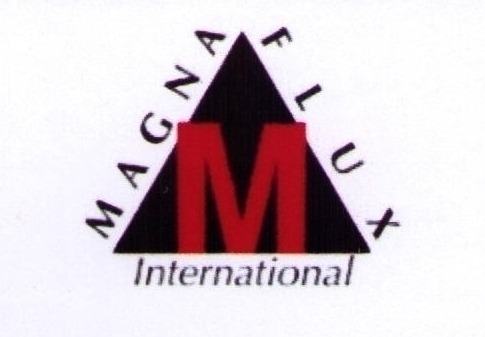
#Magnetic Chuck#magnetic chuck for sale#small magnetic chuck#Magnetic Chucks#Magnetic Chuck Control#Buy Magnetic Chuck#Electromagnetic chuck#best magnetic chuck online#industrial magnetic chuck supplier#order magnetic chuck online
0 notes
Text
#aluminum covers#aluminum cover#aluminum dishes with covers#aluminum dishes#aluminium cover price#dish covers#aluminum dish#covers for dishes
0 notes
Text
#helical gear motors#gear motors#gear motor for sale#sew helical gear motor#best gear motor#eurodrive gear motors#gear sew eurodrive#helical gearbox#helical geared
0 notes
Text
Buy Clear PVC Pipe Fittings – Schedule 40, Transparent & Durable

When it comes to industrial plumbing, clarity and durability go hand in hand literally. If you are running a facility in the USA that needs reliability, easy visual inspection, and chemical resistance, clear PVC pipe fittings are a game-changer. This post will walk you through why they matter, what options are out there, and how to get the best deal without compromising quality.
Why Choose Clear PVC Pipe Fittings for Industrial Use?
Let us face it: in an industrial environment, guessing is a luxury you cannot afford. That’s where clear PVC fittings shine.
Transparent Advantage: Instantly monitor flow, blockages, or contaminants—no need to dismantle your system.
Chemical Resistance: Perfect for labs, food processing, water treatment, and other industrial applications.
Durability Under Pressure: Especially in Schedule 40 grade, these fittings can handle both pressure and temperature demand reliably.
Whether you are managing water lines or chemical flow systems, seeing what is going on inside the pipes can help prevent downtime and boost safety.
The important Kinds of Schedule 40 Clear PVC Fittings Available
When looking to buy clear PVC pipe fittings, it is important to understand what options are available to best suit your needs:
Clear PVC Couplings for Sale: Ideal for joining two pipe sections securely without affecting visibility.
Elbows & Tees: Create directional changes and branch points in your piping system with ease.
Bushings & Adapters: Connect various sizes or transition to different pipe types smoothly.
Caps & Plugs: Seal off ends for testing or maintenance without permanent alterations.
Each of these options is built for industrial-grade applications and complies with standard U.S. measurements and regulations.
What Affects Clear PVC Pipe Fittings Price?
Understanding the clear PVC pipe fittings price before making a purchase is crucial, especially when working with larger-scale projects.
Factors that influence pricing:
Schedule Rating: Schedule 40 offers a balance between strength and affordability.
Quantity: Buying in bulk often unlocks better pricing and shipping deals.
Brand/Manufacturer: Premium brands may charge more, but they often deliver superior consistency and certification.
If you are shopping around, be sure to compare quality—not just the price tag.
Q&A: What Industrial Owners Want to Know
Q: Can I use PVC pipe fittings that are clear for high-pressure systems?
A: Yes, but make sure you choose Schedule 40 or even Schedule 80 for higher strength. Always consult the pressure rating chart.
Q: Are these fittings UV-resistant?
A: Not all are. For outdoor use, opt for UV-stabilized options or use shielding.
Q: How do I ensure compatibility with my existing setup?
A: Stick to U.S. standard dimensions and double-check chemical compatibility with your line contents.
Let Us Get You Fitted – Buy with Confidence
Looking to buy clear PVC pipe fittings for your next industrial project? We have got everything from clear PVC couplings for sale to elbows, tees, and more—all engineered for performance and transparency.
Reach out to our team for a quote or other information about the ideal clear PVC pipe fittings for your requirements. You will get expert support, fast shipping, and top-tier product quality without breaking the bank.

#clear PVC pipe fittings#clear PVC pipe#buy clear PVC pipe fittings#Clear PVC Couplings for Sale#clear pvc schedule 40 fittings#clear PVC pipe fittings price#usa
0 notes
Text
#buy glass beakers#glass beakers for sale#glass beakers#metal beakers#metal and glass beakers#glass beaker
0 notes
Text
Discover the Best Coin Sorter Machine for Accurate and Fast Counting
In today’s fast-paced world, businesses and organizations in the USA that handle cash transactions need efficient tools to streamline operations. One such essential tool is a coin sorter machine. Whether you're running a retail store, vending business, laundry service, or bank, investing in a high-quality coin sorter can save time, reduce errors, and improve productivity.
Let’s explore why coin sorter machines are a smart choice and what to consider when buying one.
🔍 What is a Coin Sorter Machine?
A coin sorter machine is a device that automatically sorts mixed coins by denomination. Advanced models also count and wrap coins, helping businesses eliminate the tedious and error-prone process of manual counting. From small countertop models for small businesses to high-volume machines for banks, there’s a wide variety of options to choose from.
✅ Benefits of Using a Coin Sorter Machine
Here’s why thousands of American businesses are adopting coin sorter machines:
⏱️ Saves Time: Sorts hundreds of coins per minute
🎯 Increases Accuracy: Reduces manual errors and miscounts
💼 Boosts Productivity: Employees focus more on core business tasks
💵 Cash Flow Management: Accurate counting aids in better financial control
🧾 Easy Reporting: Many models come with digital displays and print reports
📌 Choosing the Right Coin Sorter Machine for Your Business
When searching for a coin sorter machine for sale, consider the following:
🔧 Key Features to Look For:
Sorting Speed: Look for machines that sort at least 200 coins/min
Hopper Capacity: Choose based on the volume of coins you handle
Display & Interface: LCDs and touchscreens add convenience
Batching & Wrapping: Ideal for banks and coin-intensive industries
Portability: Compact designs for limited counter space
👤 Who Needs a Coin Sorter Machine?
Retail stores
Banks and credit unions
Laundromats
Parking services
Casinos and arcades
Nonprofits handling fundraising coins
🇺🇸 Coin Sorter Machine for Sale in the USA
If you’re located in the United States and searching for a reliable coin sorter machine for sale, you're in luck. Many trusted US-based suppliers offer premium machines with nationwide shipping, service warranties, and tech support.
Some top American brands and distributors even provide:
Free shipping
Bulk discounts for institutions
Extended warranty and maintenance support
👉 Tip: Always purchase from a trusted vendor with good reviews and after-sales support to ensure a hassle-free experience.
🙋♀️ Q&A: Coin Sorter Machine Essentials
Q1: Can coin sorters detect counterfeit coins?
Some advanced models feature counterfeit detection using magnetic sensors or weight checking. Check specifications before purchasing.
Q2: What coins can it sort?
Most machines are designed to sort US coins (pennies, nickels, dimes, quarters, half dollars, and dollar coins). Some allow custom settings.
Q3: How often do these machines need maintenance?
With regular cleaning and following the manufacturer’s guidelines, maintenance is minimal. High-volume users should service them monthly.
Q4: Are coin sorter machines noisy?
Noise levels vary. Look for machines advertised as “low-noise” or check decibel ratings before buying.
📞 Ready to Simplify Your Coin Management?
Don’t waste another minute manually counting coins. Invest in a high-performance coin sorter machine and experience fast, accurate, and efficient coin handling.
🚀 Call Us or Shop Online Now!
🔹 Fast Shipping Across the USA 🔹 Top Brands at Competitive Prices 🔹 Expert Support & Warranty Options
📲 Shop Coin Sorter Machines Now
🔚 Final Thoughts
A coin sorter machine isn’t just a convenience it’s a smart investment for any business that regularly handles coins. With various models available for different needs and budgets, you’re sure to find the right coin sorter machine for sale in the USA to streamline your operations.
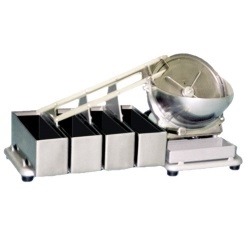
#coin sorter machine#electric coin sorter#manual coin sorter#coin sorter electric#coin sorter manual#manual and electric coin sorters#coin sorter machine for sale#best coin sorter machine
0 notes